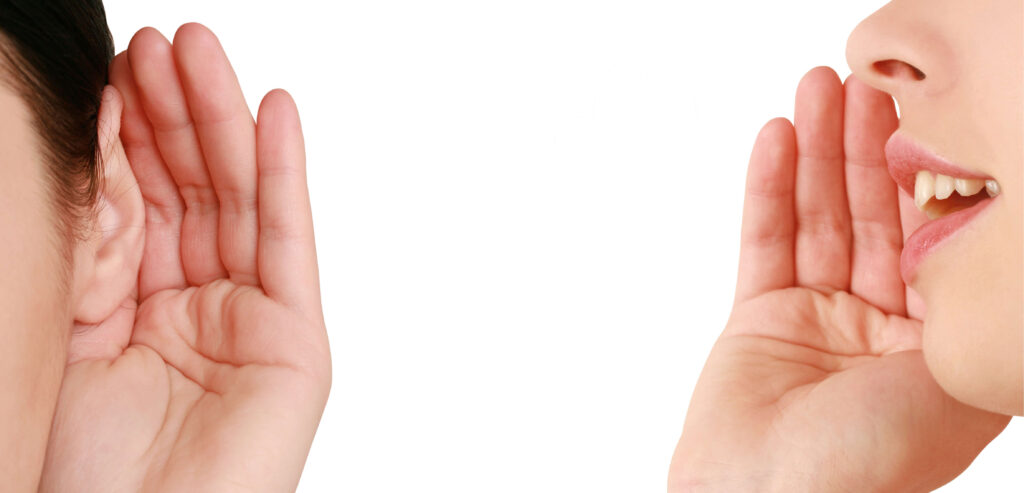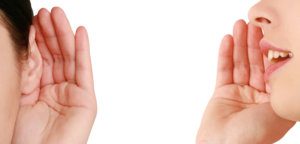Let’s face it, most people love to talk more than they like to listen. The squeaky wheel gets the grease after all, right?
In fact, everything we learn from the time we’re young reinforces the value of talk over listening. We wait for baby’s first word, bribing and cajoling them to say something … anything … (maybe “mama” first?).
At what point in time do we learn listening skills? Our parents and teachers told us, “Be quiet and listen!” But did they tell us HOW to listen and listen well? Probably not. As a result, most of us need a few easy-to-use techniques for improving our listening.
1. Be ready to listen.
Ensure you’re in a “good place” both mentally and physically. If it’s too loud around you, you have something else on your mind, you’re ill, or just in a bad mood, it’s okay to say, “Not now” to listening. Ask the person to wait for a time, or wait until you can get to a place where you can listen effectively.
2. Zip it!
Okay mom was right. “Zipping your lip” is definitely part of being a good listener. We need to avoid interrupting others, finishing their sentences, adding our “two cents worth,” and any other talk that takes away from the speaker and turns it toward ourselves. When you feel the urge to unzip, only do so (at first) to do #4 and #5 below.
3. Listen with your ears, “heart”, and eyes.
When attempting to listen, most of us put our attention on listening to the words others say. However, not everyone says what they’re really thinking, so be sure to also pay attention to their nonverbal communication- their vocal qualities and body language.
For example- you see a colleague in the hall need to talk with him. If you’re polite, you may ask, “Do you have time to chat?” If he looks at his watch, purses his lips, hesitates, and says, “Uh, yeah, I guess, a minute.” Listen to what his nonverbals are telling you– the real message is “no.” So you might say, “It looks like you’re in a hurry, what would be a better time to talk?” Trust me; he’ll be relieved that you “got it.”
4. Give your undivided attention.
Just as the speaker’s nonverbals communicate, our own nonverbals speak volumes about our interest in listening. Look people in the eye, stop doing other things, clear your mind of your own thoughts, and respond with facial expressions that say, “I get it.” If you’re too busy or distracted to listen, ask the speaker if you can discuss the issue later when you can give him or her your undivided attention.
5. Paraphrase what you’ve heard.
To ensure you’ve truly heard what someone has said, paraphrase, or repeat back in your own words, the message you’ve understood. Note- be sure to paraphrase what the speaker’s nonverbal message is telling you. In #3 above, the response is “it looks like you’re in a hurry …” even though the friend never actually said so, but his nonverbals did. Responding to the verbal AND nonverbal message shows that you’ve received the whole message- even the ones others are too polite to speak.
6. Ask questions to gather more information.
In the spirit of not taking over, avoid commenting or sharing your own truth or experiences. Instead of telling a coworker, “I know what you mean, it’s been so long since I’ve had a vacation too, I wish …” Say, “It sounds like you’re looking forward to your vacation. What kind of activities do you have planned?”
Additionally, asking questions often gets you more useful information than if you’d just left it up to the speaker to share everything you need to know.
Doctor: So what brings you here?
You: My throat hurts.
Doctor: Okay, let’s schedule you for a tonsillectomy.
I don’t think anyone would want to visit a doctor who didn’t ask a few more questions.
The six tips above are certainly not the only things we can do to be better listeners. There are many different types of listening and different skills to do each well. However, adding these skills to your listening repertoire will be a great start toward improving your listening.
You’ll be surprised what you’ll learn when you really listen.
For more information about improving your listening and other communication skills, check out my book, Practical Communication: 25 Tips, Tools, and Techniques for Getting Along and Getting Things Done or my 3-minute-a-day, Communication Skills for Career Success video program.








